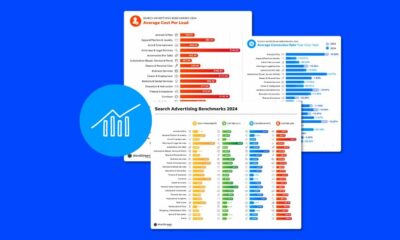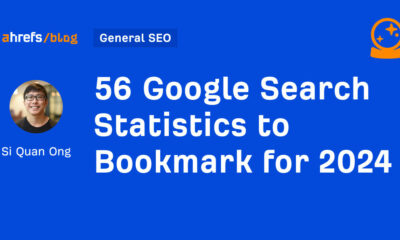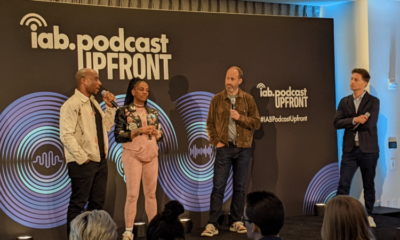What’s Driving Google’s Title Tag Rewrites?

What are the real reasons Google is rewriting title tags? What technology is powering these article rewrites and what does it mean for how publishers and search marketers write title tags?
Data Collection Before Title Tag Rewrites?
In May Google announced an updated platform that helps create new algorithms as well as update older algorithms. This platform is known as Keras-based TF-Ranking.
The updated Keras-based TF-Ranking platform allows the rapid prototyping, testing and rollout of new algorithms. It was also used to help BERT become even more powerful with a new architecture called, TFR-BERT.
What is notable is that it allows the rapid development and deployment of new LTR (Learning to Rank) models, algorithms and improvements to existing algorithms.
This is what Google published:
“In May 2021, we published a major release of TF-Ranking that enables full support for natively building LTR models using Keras, a high-level API of TensorFlow 2.
Our native Keras ranking model has a brand-new workflow design, including a flexible ModelBuilder, a DatasetBuilder to set up training data, and a Pipeline to train the model with the provided dataset.These components make building a customized LTR model easier than ever, and facilitate rapid exploration of new model structures for production and research.”
Read more here: KERAS TF-Ranking
Is it coincidental that there have been multiple updates to the search results at an unprecedented pace ever since that new TF-Ranking platform was announced?
For example, prior to the title tag rewrites in August there was an increase in PAA (People Also Ask) features.
When users interacted with the People Also Ask (PAA) features, those interactions were sent back to Google as data about what users mean when they search for certain queries as well as data about why they did not click on relevant search queries listed in the search results (because maybe the title tags weren’t descriptive?).
So it may follow that how users interacted with the People Also Ask features may have contributed to helping Google understand that for a percentage of search queries some users didn’t click on relevant search results because of the title tags.
TFR-BERT Ranking Algorithm
Google had new and more powerful algorithms to help understand ranking related data.
This is what the Google article about Keras-based TF-Ranking noted about the new version of BERT:
“Our experience shows that this TFR-BERT architecture delivers significant improvements in pretrained language model performance, leading to state-of-the-art performance for several popular ranking tasks…”
Google hasn’t discussed what is powering the title tag rewriting or what data is being used to power it.
So we can only connect the dots between the different algorithms and platform advances that have been made this year.
Some of what we know is:
- An increase in the People Also Ask feature preceded the title tag changes
- The BERT algorithm may have been updated to TFR-BERT
- Google updated a learning to rank platform called Keras-based TF-Ranking that helps development of new machine learning architectures
What Does Google Say About Title Tags?
Google has published an SEO starter guide that features a section about title tags.
Google’s advice on title tags:
“A <title> tag tells both users and search engines what the topic of a particular page is.
Accurately describe the page’s content
- Choose a title that reads naturally and effectively communicates the topic of the page’s content.
- Create unique titles for each page
- Use brief, but descriptive titles”
Google Does Not Recommend Keywords for Title Tag
Nowhere in Google’s title tag SEO article do they advise adding keywords to the title tag.
Google’s SEO guide doesn’t dissuade publishers from adding keywords into the title tag but Google doesn’t recommend it either.
The only section where Google mentions title tags is in one section where Google says what not to do:
“Stuffing unneeded keywords in your title tags.”
In Google’s guide for title tags, the above statement is the only place where Google mentions keywords.
It’s worth underlining this point:
Google’s SEO starter guide advises using the title tag to describe what the page is about. Google does not advise using the title tag as a dumping ground for keywords.
Google’s John Mueller on Title Tags
As recently as December 2020 John Mueller said that rather than dump keywords in the title tag it was better to use the title tag to describe what the page is about using the words that a searcher would likely use in order to stimulate click through rate.
He didn’t say that using those keywords would help rankings.
He said, in the context commenting on the use of title tags for dumping keywords, it was better to use a descriptive title tag to get a higher CTR.
Here is what he said:
“…if you can create a title that matches what the user is actually looking for then it’s a little bit easier for them to actually click on a search result because they think “oh this really matches what I was looking for.
So that’s something where I almost think it’s a matter of improving the click-through rate rather than improving the ranking. And if, with the same ranking, you get a higher click-through rate because people recognize your site as being more relevant then that’s kind of a good thing.
And sometimes I suspect the bigger aspect is really the click-through rate from search rather than the ranking effect.”
In the same Google Webmaster Hangout he also said, regarding the use of keywords in title for ranking purposes:
“So just because they are used for ranking doesn’t mean you need to put everything in there.”
Mueller has been consistent in his advice about title tags.
In 2016 he said that the title tag isn’t the most critical as a primary ranking signal and that the best use was to describe what the page is about in a way that’s useful to users.
This is what Mueller said:
“We use that just as a part. I think it’s not like the primary ranking factor of a page, to put it that way.
We do use it for ranking but it’s not the most critical part of a page.
So it’s not worthwhile filling it with keywords to kind of hope that it works that way.
In general we try to recognize when a title tag is stuffed with keywords because that’s also a bad user experience for users in the search results.
If they’re looking to understand what these pages are about and they just see a jumble of keywords, then that doesn’t really help.”
Mueller next addressed having keywords in the title tag:
“Having keywords in the title tag is fine. I would just kind of write the title tag in a way that really describes in maybe one sentence what this page is actually about.
To really make a clear title rather than to just have like keyword-1, keyword-2, keyword-3 in there.”
John Mueller could not be any clearer about the proper use of title tags: The proper use of title tags is to describe what the page is about.
That point of view matches exactly with what the most current version of Google’s SEO Starter guide says about the proper use of title tags.
When asked about what he would deem critical for rankings, if not title tags, Mueller responded that the actual content on the page was critical. He then presented an example of a Q&A site that didn’t have title tags or descriptions because they wanted Google to use what was on the web page itself and Mueller said it worked well for them.
He said:
“And that worked really well. So that’s not something where we would say if you don’t have a title tag you don’t have any chance of showing up in search.
From my point of view the title tag is something that’s worth specifying if you have something specific that you want to use as the title.
And you can really refine it into something kind of short and to the point.”
It’s clear that Google’s advice is to use the title tag strictly for describing what a page is about in a way that matches the words that a searcher might use when looking for what is on the web page.
Mueller also affirmed that title tag was not critical for ranking but rather the on-page content is critical for ranking.
Keywords in Title Tags: SEO Circa 2002
Way back in the early days of SEO, in the early 2000’s it was absolutely necessary to use keywords in the title tag. The ranking benefits were indisputable.
That way of thinking continues today, even though Google appears to have moved on.
Are Publishers and SEOs Mishandling Title Tags?
If Google is rewriting title tags, is it possible that maybe the title tags were poorly written?
Ask anyone about their title tags and I bet they will assert their title tags are perfect.
So under those circumstances, good luck convincing anyone that there is something wrong with their title tags, right?
I’m not saying that the search industry is wrong about title tags.
I’m just saying to keep an open mind.
Three Different Title Tags for the Same Article
Common practice for SEO is that the title tag describes the web page and it’s where you put the targeted keywords.
That seems simple but it’s not because the interpretation of what a page is about can be highly subjective.
Let’s use the example of an article about chicken noodle soup.
Is the article about Chicken Noodle Soup Recipe, The History of Chicken Noodle Soup or is it about Chicken Soup?
- Conventional SEO: The article is about Chicken Soup (more traffic) so put that in the title tag
- Common Sense: It’s a recipe article so the title tag should be Chicken Soup Recipe
- Non-SEO Viewpoint: Since there are 800 words about the history of chicken noodle soup and only 300 words about the recipe, the web page is clearly about The History of Chicken Noodle Soup.
Choosing a title tag isn’t always as straightforward as saying what the page is about, dumping your “targeted keywords” in the title tag and adding a call to action to stimulate clicks.
SEO Standard Practice for Title Tags
It is commonly understood that the title tag is the place where targeted keywords go. But that’s not how Google describes the proper use of the title tag.
The search industry also says to use the title tag for branding, to add a call to action, use secondary keywords and almost as an afterthought, to use the title tag to also describe what the page is about.
Is it even possible to use the title tag for branding, keywords and call to action in 50 to 70 letters and spaces?
There is a tension in title tag articles about using title to describe the page topic and adding keywords to it. The tension derives from the advice to add keywords to the title tag and the advice to describe what the web page is about.
Adding keywords is consistently the number one focus and describing what the page is about, if mentioned at all, is almost an afterthough.
Is the article about keyword-1 keyword-2 or is the article about The History of Chicken Noodle Soup?
Moz published an SEO guide that says this about title tags:
“The title tag of a web page is meant to be an accurate and concise description of a page’s content.”
The above statement is in line with Google’s recommendations.
Then further down the page it gives this example of how to format the title tag:
“Format example
Primary Keyword – Secondary Keyword | Brand Name”
That example is an illustration of how to use title tags in the early 2002. The example arguably does not conform with Google’s advice to describe what the web page is about.
Adding keywords to the title tag is standard SEO practice since the early 2000’s.
I’m not saying Moz is wrong… but there is a contradiction in what the SEO industry says about title tags and what Google says.
SEO Articles About Title Tags
There are many articles about optimizing title tags. There are so many articles on the topic (search it for yourself) that one would think that poor title tags was the number one reason for poor rankings.
The following are excerpts from various articles about title tags, which are arguably representative of the conventional view of how to optimize title tags.
SEMRush offers five points of advice for a title tag:
- Include your target keywords.
- Write a title that matches search intent.
- Avoid creating duplicate title tags.
- Avoid keyword stuffing.
- Keep it descriptive but concise.
There’s nothing there in those five points about describing what the web page is about.
But there is the advice from the early 2000’s about including the target keywords.
Sistrix offers four points of advice, three of which involve keywords:
- Be relevant to the content on the page
- Include the keyword that you want the page to rank for
- Use the longtail keyword, too – this can be in conjunction with the main keyword
- Have the keyword at the start of the title
Yoast’s article on title tags says a title tag has two goals:
- It must help you rank for a keyword;
- it must make the user want to click through to your page.
Describing what the page is about is not even mentioned as one of the two top goals for title tags.
Yoast only mentions describing the page topic later on:
“…you also need to make sure that your page title reflects the topic being discussed on your page and the keyword that you’re focusing on.”
The Yoast article, like many other SEO articles about title tags, did not make describing the web page a primary quality of title tags.
Like many other SEO articles, the Yoast article on title tags focused on the importance of adding keywords in the title tag.
SEO Best Practices Different From Google’s Advice
It’s clear that how the search industry understands title tags is different from how Google advises the title tag should be used.
It’s also clear that the SEO best practices about title tags dates from the early 2000s and that those “best practices” have not been updated for the past twenty years.
Here’s what Brett Tabke (@btabke), seminal SEO thought leader, founder of search marketing forum WebmasterWorld and of the Pubcon search conference advised in 2002:
“Use the keyword once in title, once in description tag, once in a heading, once in the url, once in bold, once in italic, once high on the page…”
That advice from 2002 is pretty much how many SEOs continue to use keywords today in 2021.
Google has moved on and is recommending something completely different since 2002 for optimizing title tags.
Doesn’t it seem odd that the SEO industry continues to optimize title tags like it is still 2002?
The advice for adding “targeted keywords” to the title tag is nearly 20 years old.
Could it be that at least one of the things that is driving Google’s title tag rewrites is that dumping keywords into the title tag is inadequate for describing what a web page is about?
It’s clear that the words searchers use should be included in the title tag because it helps communicate that a page is relevant for a specific search query.
Keeping an open mind, given that Google specifically recommends this for title tags, could it be that describing what a page is about should be a primary consideration?
Citations
Watch the Google Webmaster Hangout at the 57:53 minute mark:
AI
Exploring the Evolution of Language Translation: A Comparative Analysis of AI Chatbots and Google Translate

According to an article on PCMag, while Google Translate makes translating sentences into over 100 languages easy, regular users acknowledge that there’s still room for improvement.
In theory, large language models (LLMs) such as ChatGPT are expected to bring about a new era in language translation. These models consume vast amounts of text-based training data and real-time feedback from users worldwide, enabling them to quickly learn to generate coherent, human-like sentences in a wide range of languages.
However, despite the anticipation that ChatGPT would revolutionize translation, previous experiences have shown that such expectations are often inaccurate, posing challenges for translation accuracy. To put these claims to the test, PCMag conducted a blind test, asking fluent speakers of eight non-English languages to evaluate the translation results from various AI services.
The test compared ChatGPT (both the free and paid versions) to Google Translate, as well as to other competing chatbots such as Microsoft Copilot and Google Gemini. The evaluation involved comparing the translation quality for two test paragraphs across different languages, including Polish, French, Korean, Spanish, Arabic, Tagalog, and Amharic.
In the first test conducted in June 2023, participants consistently favored AI chatbots over Google Translate. ChatGPT, Google Bard (now Gemini), and Microsoft Bing outperformed Google Translate, with ChatGPT receiving the highest praise. ChatGPT demonstrated superior performance in converting colloquialisms, while Google Translate often provided literal translations that lacked cultural nuance.
For instance, ChatGPT accurately translated colloquial expressions like “blow off steam,” whereas Google Translate produced more literal translations that failed to resonate across cultures. Participants appreciated ChatGPT’s ability to maintain consistent levels of formality and its consideration of gender options in translations.
The success of AI chatbots like ChatGPT can be attributed to reinforcement learning with human feedback (RLHF), which allows these models to learn from human preferences and produce culturally appropriate translations, particularly for non-native speakers. However, it’s essential to note that while AI chatbots outperformed Google Translate, they still had limitations and occasional inaccuracies.
In a subsequent test, PCMag evaluated different versions of ChatGPT, including the free and paid versions, as well as language-specific AI agents from OpenAI’s GPTStore. The paid version of ChatGPT, known as ChatGPT Plus, consistently delivered the best translations across various languages. However, Google Translate also showed improvement, performing surprisingly well compared to previous tests.
Overall, while ChatGPT Plus emerged as the preferred choice for translation, Google Translate demonstrated notable improvement, challenging the notion that AI chatbots are always superior to traditional translation tools.
Source: https://www.pcmag.com/articles/google-translate-vs-chatgpt-which-is-the-best-language-translator
Google Implements Stricter Guidelines for Mass Email Senders to Gmail Users
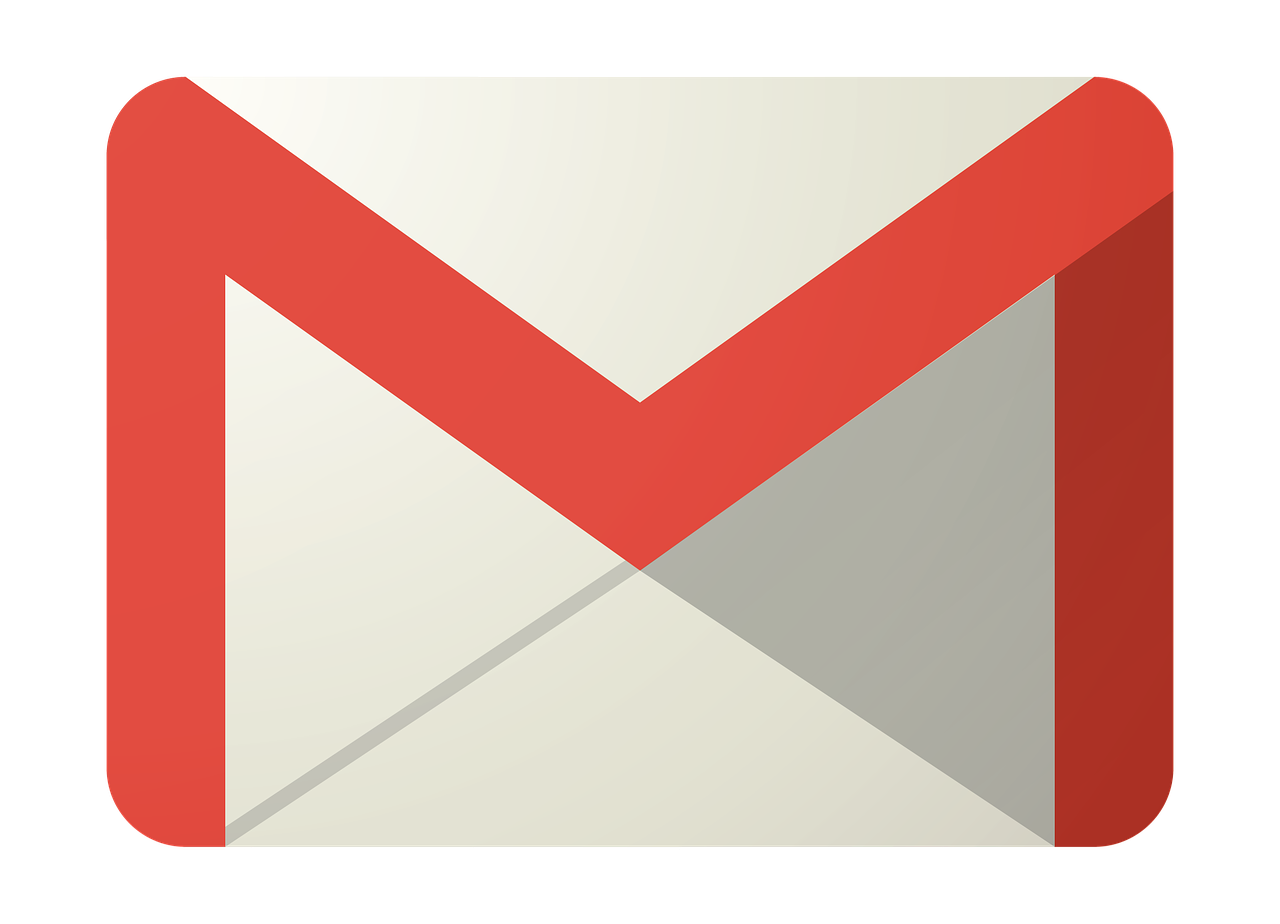
Beginning in April, Gmail senders bombarding users with unwanted mass emails will encounter a surge in message rejections unless they comply with the freshly minted Gmail email sender protocols, Google cautions.
Fresh Guidelines for Dispatching Mass Emails to Gmail Inboxes In an elucidative piece featured on Forbes, it was highlighted that novel regulations are being ushered in to shield Gmail users from the deluge of unsolicited mass emails. Initially, there were reports surfacing about certain marketers receiving error notifications pertaining to messages dispatched to Gmail accounts. Nonetheless, a Google representative clarified that these specific errors, denoted as 550-5.7.56, weren’t novel but rather stemmed from existing authentication prerequisites.
Moreover, Google has verified that commencing from April, they will initiate “the rejection of a portion of non-compliant email traffic, progressively escalating the rejection rate over time.” Google elaborates that, for instance, if 75% of the traffic adheres to the new email sender authentication criteria, then a portion of the remaining non-conforming 25% will face rejection. The exact proportion remains undisclosed. Google does assert that the implementation of the new regulations will be executed in a “step-by-step fashion.”
This cautious and methodical strategy seems to have already kicked off, with transient errors affecting a “fraction of their non-compliant email traffic” coming into play this month. Additionally, Google stipulates that bulk senders will be granted until June 1 to integrate “one-click unsubscribe” in all commercial or promotional correspondence.
Exclusively Personal Gmail Accounts Subject to Rejection These alterations exclusively affect bulk emails dispatched to personal Gmail accounts. Entities sending out mass emails, specifically those transmitting a minimum of 5,000 messages daily to Gmail accounts, will be mandated to authenticate outgoing emails and “refrain from dispatching unsolicited emails.” The 5,000 message threshold is tabulated based on emails transmitted from the same principal domain, irrespective of the employment of subdomains. Once the threshold is met, the domain is categorized as a permanent bulk sender.
These guidelines do not extend to communications directed at Google Workspace accounts, although all senders, including those utilizing Google Workspace, are required to adhere to the updated criteria.
Augmented Security and Enhanced Oversight for Gmail Users A Google spokesperson emphasized that these requisites are being rolled out to “fortify sender-side security and augment user control over inbox contents even further.” For the recipient, this translates to heightened trust in the authenticity of the email sender, thus mitigating the risk of falling prey to phishing attempts, a tactic frequently exploited by malevolent entities capitalizing on authentication vulnerabilities. “If anything,” the spokesperson concludes, “meeting these stipulations should facilitate senders in reaching their intended recipients more efficiently, with reduced risks of spoofing and hijacking by malicious actors.”
Google’s Next-Gen AI Chatbot, Gemini, Faces Delays: What to Expect When It Finally Launches
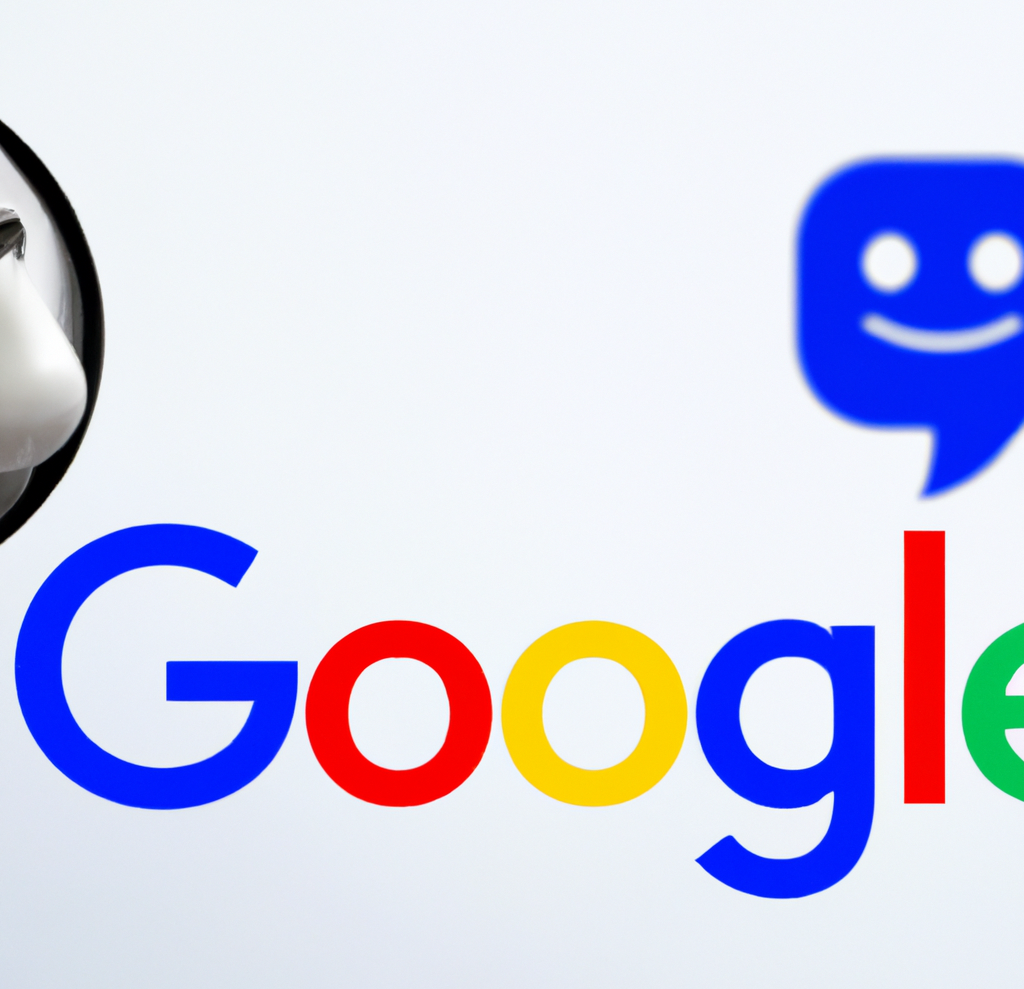
In an unexpected turn of events, Google has chosen to postpone the much-anticipated debut of its revolutionary generative AI model, Gemini. Initially poised to make waves this week, the unveiling has now been rescheduled for early next year, specifically in January.
Gemini is set to redefine the landscape of conversational AI, representing Google’s most potent endeavor in this domain to date. Positioned as a multimodal AI chatbot, Gemini boasts the capability to process diverse data types. This includes a unique proficiency in comprehending and generating text, images, and various content formats, even going so far as to create an entire website based on a combination of sketches and written descriptions.
Originally, Google had planned an elaborate series of launch events spanning California, New York, and Washington. Regrettably, these events have been canceled due to concerns about Gemini’s responsiveness to non-English prompts. According to anonymous sources cited by The Information, Google’s Chief Executive, Sundar Pichai, personally decided to postpone the launch, acknowledging the importance of global support as a key feature of Gemini’s capabilities.
Gemini is expected to surpass the renowned ChatGPT, powered by OpenAI’s GPT-4 model, and preliminary private tests have shown promising results. Fueled by significantly enhanced computing power, Gemini has outperformed GPT-4, particularly in FLOPS (Floating Point Operations Per Second), owing to its access to a multitude of high-end AI accelerators through the Google Cloud platform.
SemiAnalysis, a research firm affiliated with Substack Inc., expressed in an August blog post that Gemini appears poised to “blow OpenAI’s model out of the water.” The extensive compute power at Google’s disposal has evidently contributed to Gemini’s superior performance.
Google’s Vice President and Manager of Bard and Google Assistant, Sissie Hsiao, offered insights into Gemini’s capabilities, citing examples like generating novel images in response to specific requests, such as illustrating the steps to ice a three-layer cake.
While Google’s current generative AI offering, Bard, has showcased noteworthy accomplishments, it has struggled to achieve the same level of consumer awareness as ChatGPT. Gemini, with its unparalleled capabilities, is expected to be a game-changer, demonstrating impressive multimodal functionalities never seen before.
During the initial announcement at Google’s I/O developer conference in May, the company emphasized Gemini’s multimodal prowess and its developer-friendly nature. An application programming interface (API) is under development, allowing developers to seamlessly integrate Gemini into third-party applications.
As the world awaits the delayed unveiling of Gemini, the stakes are high, with Google aiming to revolutionize the AI landscape and solidify its position as a leader in generative artificial intelligence. The postponed launch only adds to the anticipation surrounding Gemini’s eventual debut in the coming year.
-

 MARKETING7 days ago
MARKETING7 days agoA Recap of Everything Marketers & Advertisers Need to Know
-

 PPC5 days ago
PPC5 days agoHow the TikTok Algorithm Works in 2024 (+9 Ways to Go Viral)
-

 SEO6 days ago
SEO6 days agoBlog Post Checklist: Check All Prior to Hitting “Publish”
-

 SEO4 days ago
SEO4 days agoHow to Use Keywords for SEO: The Complete Beginner’s Guide
-

 MARKETING5 days ago
MARKETING5 days agoHow To Protect Your People and Brand
-

 SEARCHENGINES6 days ago
SEARCHENGINES6 days agoGoogle Started Enforcing The Site Reputation Abuse Policy
-

 PPC6 days ago
PPC6 days agoHow to Craft Compelling Google Ads for eCommerce
-

 MARKETING6 days ago
MARKETING6 days agoElevating Women in SEO for a More Inclusive Industry


